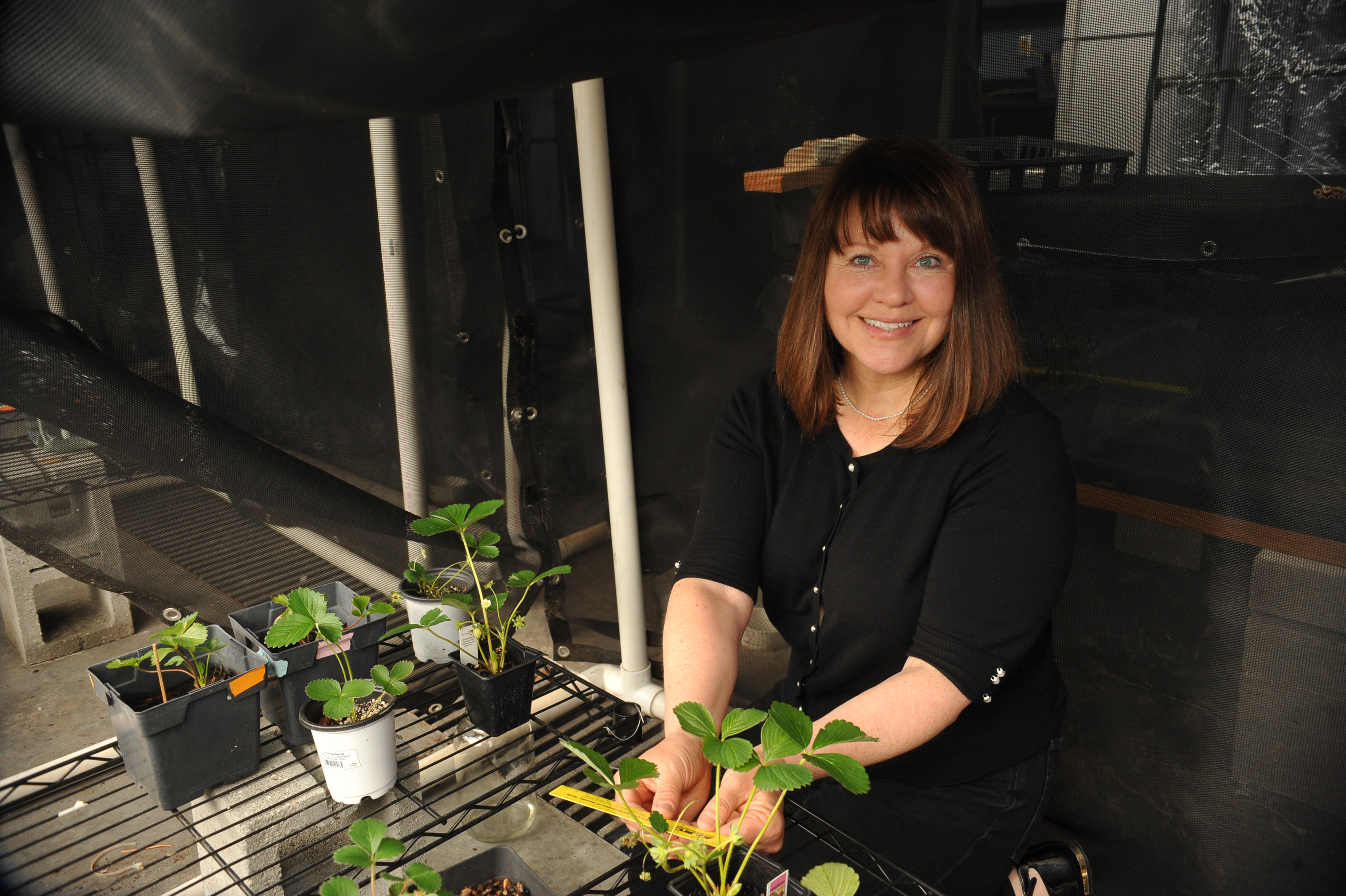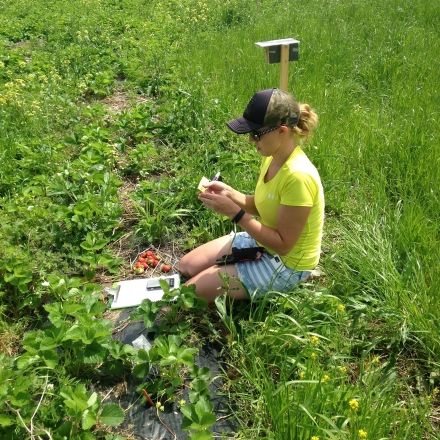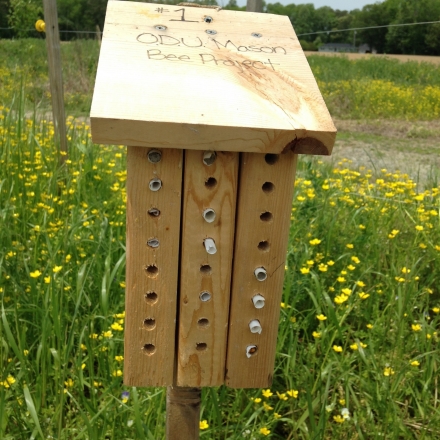ODU Researcher Uses Bees to Build a Better Berry
May 18, 2015
 Biologist Lisa Horth measures strawberry plants in her lab.
Biologist Lisa Horth measures strawberry plants in her lab.
 Graduate student Laura Campbell measures strawberry size on Cullipher Farm.
Graduate student Laura Campbell measures strawberry size on Cullipher Farm.
 A Mason Bee home at New Earth Farm. The small parchment paper tubes allow for easy removal of cocoons.
A Mason Bee home at New Earth Farm. The small parchment paper tubes allow for easy removal of cocoons.
Old Dominion University biologist Lisa Horth's research is a tale of berries and bees.
Horth wants to bring strawberry fans larger, plumper harvests on the plentiful pick-your-own farms found in South Hampton Roads, while bolstering the supply of pollinators that make it happen.
It is scientifically proven the more a strawberry flower is pollinated, the more robust the berry. So Horth has introduced native Mason (or orchard) bees to a few local farms to support the European honeybee hives farmers rent from beekeepers.
To Horth, the results have produced an exciting buzz - larger, more attractive berries on the sides of farms where Mason bees were added.
"People like to buy bigger berries with more symmetry," Horth said. "And that's important to the farmers, because bigger berries mean more money for them."
With honeybee hives under attack by Colony Collapse Disorder, an epidemic thought to be related to pesticides that can wipe out honeybee colonies overnight, Horth last year wondered whether Mason bees could be effective complementary pollinators. Mason bees are solitary by nature and immune to Colony Collapse Disorder.
"Relying on a single species fundamentally seems like a bad idea to me," said Horth, who stressed that "one in three bites of food is produced by a flying insect."
So working with the help of a grant from the U.S. Department of Agriculture, Horth placed cocoons of Mason bees - which travel only 100 feet from where they hatch - on six farms in Pungo.
That helped her track the size of fruit produced in the sections of land worked by both the Mason bees and the honeybees, which can travel as much as five miles.
Sure enough, measurements showed berries grew larger and prettier in the areas populated by both species of bee.
"It's reasonable to think that if there are two bee species around that might compete for limited resources, you might work faster when you know there's another bee there," Horth said.
"Farmer John" Wilson of the bio-diverse New Earth Farm in Virginia Beach welcomes the bee studies Horth is performing on his 21 acres of land in southern Virginia Beach.
"The big picture is we're killing honeybees by our farm and lifestyle practices," Wilson said. "So any attention on that issue directly or on finding an alternative as in Mason bees is a good thing."
Horth added this crop research to her study of ultra-violet patterns in flowers. She authored a research paper last year in which she described increasing the frequency of pollination by manipulating petals to increase the size of the UV "guides" bees see on flowers.
"In all experiments," she wrote, "pollinator visitation rates were clearly associated with UV floral guide size."
Her graduate student Michael Gregory is testing the same thing on crops under greenhouse conditions.
"We have done studies to show that UV pattern matters to pollinators," she said. "But we haven't looked at strawberries and agricultural crops to see if it matters."
One thing is for sure, Horth said:
"People are picky when it comes to which strawberries they take, so farmers want the berries to be glaring at the consumer. And on U-Pick farms, of course they want to have the consumer pick them."

